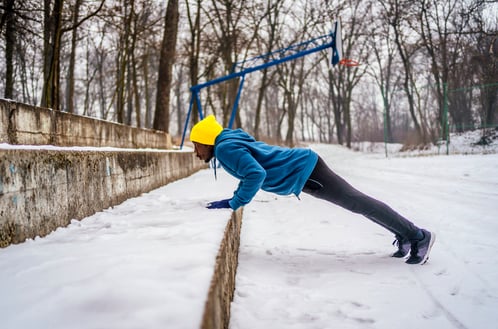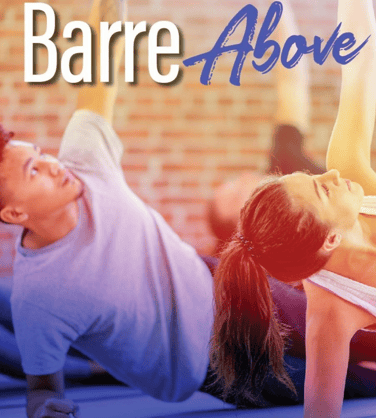When juggling all that life throws at us, squeezing in an hour at the gym isn’t always as easy as it sounds. Luckily, after reading this, you won’t need an hour—or even equipment—to get a workout. Using these quick circuits, you can boost your energy, build strength, and stay consistent with your fitness goals in less than 30 minutes. Whether you're at home, traveling, or sneaking in a quick movement break during a busy day, these bodyweight circuits, resistance-band routines, and mini cardio sessions may be for you.
Body Weight Circuits
These workouts are structured to target the bodies major muscle groups and get your heart rate up fast. Do each of these exercises for 40 seconds with a 20 second rest. Complete 3 rounds of each circuit.

Resistance Band Circuits
A single resistance band can turn any room into an at-home gym if you know what to do with it. These workouts should be quick and effective. Complete 15–20 reps per exercise for 3 rounds.

Cardio Circuits
If you’re looking for some quick cardio, a 10–20-minute interval training session could be what you’re looking for. Ten minutes has been proven to be the minimum amount of time needed to see the benefits of cardiovascular training.
Maximum Power Output and Anaerobic Conditioning
- Work-to-Rest Ratio: 1:2 or 1:3
- Example: 20 seconds all-out / 40–60 seconds rest
This style allows you to sprint at 90–100% effort each rep while preventing breakdown of form and overtraining. This helps protect your body from injury while still pushing it to the max. This style of training is ideal for sprints, hill runs, or intervals on your favorite cardio equipment.
Aerobic Conditioning
- Work-to-Rest Ratio: 1:1
- Example: 1 minute fast / 1 minute easy
This style of training keeps heart rate elevated without excessive fatigue, making it ideal for beginners or those returning to training after an extended break. These slightly longer intervals help build a strong aerobic base and allow your body time to adapt.
Improving VO₂ Max
- Work-to-Rest Ratio: 2:1
- Example: 40 seconds hard / 20 seconds rest
This style of training is common in HIIT formats and pushes your cardiovascular system to adapt. It helps build endurance and is effective for athletes of all levels.
Staying active doesn’t always have to be a struggle. The key is finding time each day to get your body moving. Even on days when motivation is low, a short routine is better than no routine and can help clear your mind, lift your mood, and keep you progressing toward your goals. Remember, consistency is key. Over time, these small, consistent efforts add up—building not only strength and endurance but also habits to help you maintain a healthy lifestyle.


 When you hear the phrase “speed training,” it’s easy to picture elite athletes—sprinters blasting off the line or pros flying down the field. But speed training isn’t reserved for them. Anyone can benefit from learning to move more efficiently, react faster, and generate more power. In fact, adding a little speed work to your weekly routine can help you feel stronger, more coordinated, and more confident in your movement—whether you’re running, lifting, or chasing your kids around the yard.
When you hear the phrase “speed training,” it’s easy to picture elite athletes—sprinters blasting off the line or pros flying down the field. But speed training isn’t reserved for them. Anyone can benefit from learning to move more efficiently, react faster, and generate more power. In fact, adding a little speed work to your weekly routine can help you feel stronger, more coordinated, and more confident in your movement—whether you’re running, lifting, or chasing your kids around the yard. The holiday season is here. That means a lot of us will be traveling to see family and friends. You might be worried about not being able to keep up with your fitness routine while on the road. I am here to show you workouts that do not require a gym.
The holiday season is here. That means a lot of us will be traveling to see family and friends. You might be worried about not being able to keep up with your fitness routine while on the road. I am here to show you workouts that do not require a gym. 
 Looking for a simple and fun way to plan your own workout? You can use a deck of playing cards to determine which exercises to do and how many reps. Here are the steps for planning this game-based workout.
Looking for a simple and fun way to plan your own workout? You can use a deck of playing cards to determine which exercises to do and how many reps. Here are the steps for planning this game-based workout. With the world now instantly accessible through technology, it’s easy to understand why a growing number of people expect things to be done in a shorter amount of time. Like many others, I’m a big fan of things that are fast and effective, and that includes my workouts. High-intensity circuit training does just that by providing an effective and convenient way to increase exercise results in less time.
With the world now instantly accessible through technology, it’s easy to understand why a growing number of people expect things to be done in a shorter amount of time. Like many others, I’m a big fan of things that are fast and effective, and that includes my workouts. High-intensity circuit training does just that by providing an effective and convenient way to increase exercise results in less time.  While training your cardiovascular system, it is important to understand how much you are stressing and overloading the system. Just like with your musculoskeletal system, there is a maximum rate your heart can achieve. The best way to discover this number is to undergo a maximal aerobic capacity test, but it isn’t necessarily practical or safe for all populations.
While training your cardiovascular system, it is important to understand how much you are stressing and overloading the system. Just like with your musculoskeletal system, there is a maximum rate your heart can achieve. The best way to discover this number is to undergo a maximal aerobic capacity test, but it isn’t necessarily practical or safe for all populations.  We’re in the midst of the holidays. You probably have family commitments or events pulling you away from the gym or time with
We’re in the midst of the holidays. You probably have family commitments or events pulling you away from the gym or time with 
 Are you looking for a workout to strengthen and tone muscles without increasing bulk, but have not found anything that you like doing? Have you always wanted to increase your cardiovascular endurance and metabolism but hate doing regular old boring cardio? Well I might have an answer for you…
Are you looking for a workout to strengthen and tone muscles without increasing bulk, but have not found anything that you like doing? Have you always wanted to increase your cardiovascular endurance and metabolism but hate doing regular old boring cardio? Well I might have an answer for you…  The temperatures are still frigid, and there are days when it seems as if the sun doesn’t shine. This is the time of year when we can start to feel down and less motivated, and maybe start to develop a case of the winter blues. It's easy for these negative thoughts to start creeping into our heads, but it is just as easy to kick these thoughts to the curb with these five simple steps.
The temperatures are still frigid, and there are days when it seems as if the sun doesn’t shine. This is the time of year when we can start to feel down and less motivated, and maybe start to develop a case of the winter blues. It's easy for these negative thoughts to start creeping into our heads, but it is just as easy to kick these thoughts to the curb with these five simple steps.